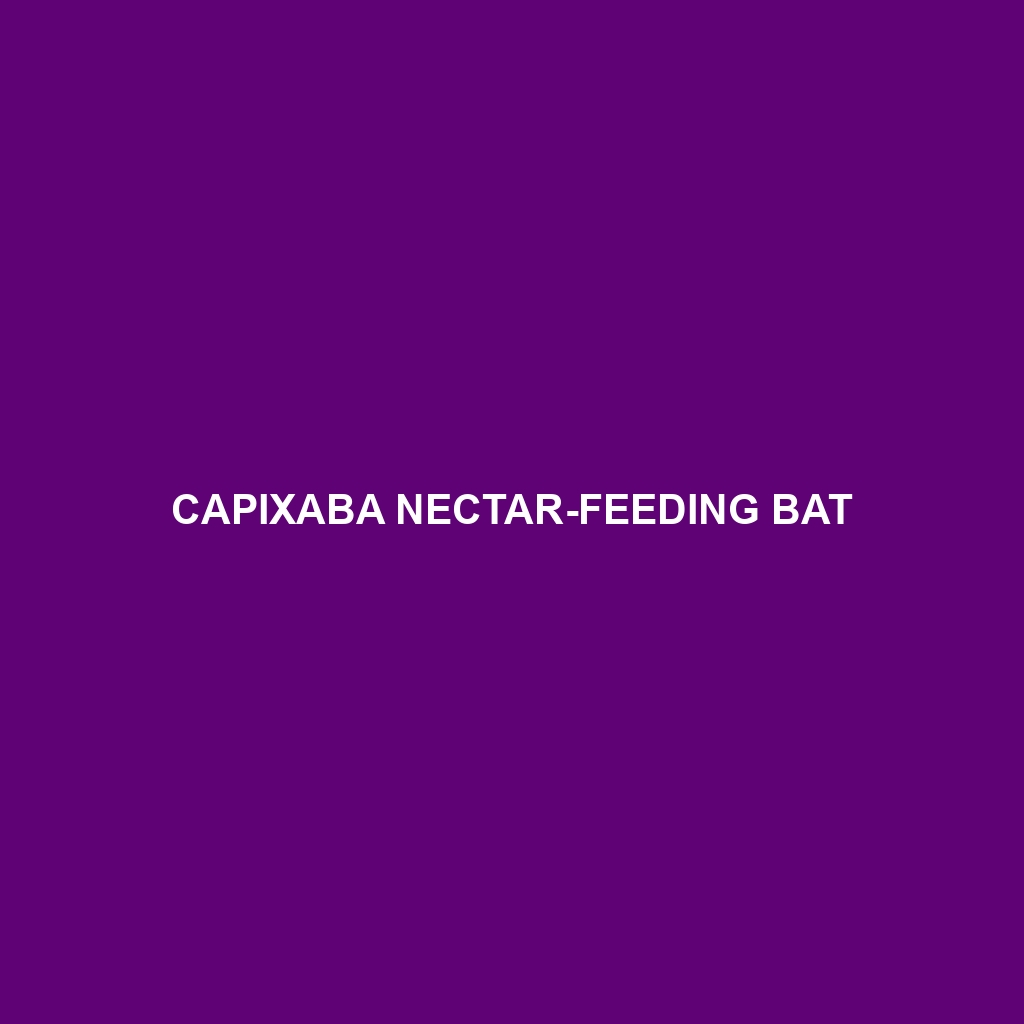Common Name: Mexican Long-tongued Bat
Scientific Name: Choeronycteris mexicana
Habitat:
The Mexican Long-tongued Bat is primarily found in a variety of habitats across regions of southern Arizona, New Mexico, and Mexico. This species prefers arid and semi-arid environments, particularly areas with flowering plants, which serve as vital food sources. They inhabit desert lowlands and open woodlands, often roosting in caves, mines, and buildings. The presence of agave and various cactus species in these locations provides essential resources for their foraging activities.
Physical Characteristics:
The Mexican Long-tongued Bat is known for its remarkable anatomy that aids its unique feeding habits. Adults typically weigh between 10 to 12 grams and measure about 7 to 9 centimeters in body length, with a wingspan of approximately 30 centimeters. Their fur is typically a mix of brown and gray, facilitating camouflage within their natural habitat. One of the most distinctive features of this bat is its extraordinarily long tongue, which can extend up to 9 centimeters, allowing it to efficiently extract nectar from deep within flowers.
Behavior:
This bat is primarily nocturnal, becoming active at dusk when it begins its foraging activities. The Mexican Long-tongued Bat employs a unique feeding strategy known as nectarivory, where it plays a critical role in pollination. They are agile fliers, capable of covering extensive distances in search of food. Socially, these bats tend to roost in small colonies, and their vocalizations can often be heard during their evening activities as they communicate within their groups.
Diet:
The diet of the Mexican Long-tongued Bat predominantly consists of nectar from various flowering plants, particularly those belonging to the agave and cactus families. They also consume pollen and occasionally small insects, which provide essential proteins. Their feeding habits not only sustain them but also play a crucial ecological role in pollinating the plants from which they feed, highlighting their importance in maintaining healthy ecosystems.
Reproduction:
Breeding typically occurs in the spring months, with females giving birth to a single pup after a gestation period of approximately 2-3 months. The pups are born hairless and rely entirely on their mothers for nourishment. Maternal care is intensive, and mothers will form crèches, allowing them to nurse multiple pups collectively while foraging for food.
Conservation Status:
The Mexican Long-tongued Bat is currently listed as vulnerable by the International Union for Conservation of Nature (IUCN). Habitat loss due to urban development and agricultural practices poses significant threats to their populations. Ongoing conservation efforts are crucial to protect their habitats and the delicate balance within their ecosystems.
Interesting Facts:
This species is known for its exceptional ability to hover in front of flowers, much like a hummingbird, allowing it to feed efficiently. Additionally, the Mexican Long-tongued Bat is one of the few bats capable of long-distance nectar feeding, making it a vital pollinator for various plants, including certain species of agave used in tequila production.
Role in Ecosystem:
The Mexican Long-tongued Bat plays a significant role in its ecosystem as a pollinator, aiding in the reproduction of many desert plants. By facilitating the pollination process, these bats contribute to plant diversity and the overall health of their habitats. Their interactions with flowering plants help sustain other species, further emphasizing their importance within the ecological community.
